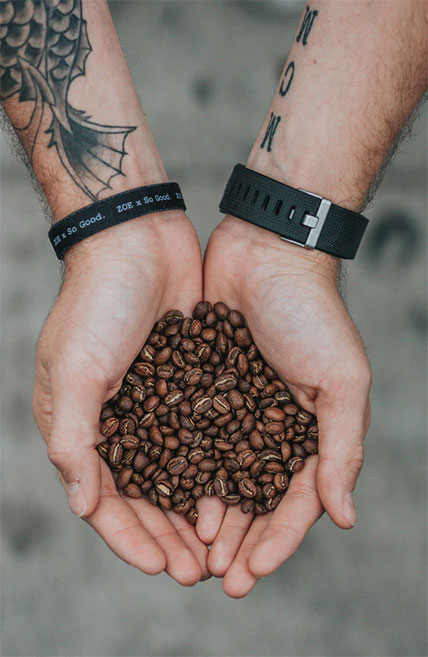Peaberry: in coffee, size matters

Peaberry beans are small in the eye, but big in taste!
When one decides to explore the world of coffee in depth, one is confronted with different terminology, which can be confusing and confusing. One of them is the Peaberries!
Most coffee lovers have come across this terminology, usually denoting higher quality coffee. In our little guide we look at the origins and secrets of Peaberries, we dispel a widespread myth, but we also suggest two fine Peaberry varieties, in order to decide for yourself if the .... snails are as tasty as it is said.
 What exactly is a Peaberry?
What exactly is a Peaberry?
Peaberry is a natural mutation that affects both the size of the coffee bean and the number of beans in the "cherry" of the coffee tree. Normally, each coffee bean contains two beans, oval in shape and relatively flat. In the case of the Peaberry, the coffee cherry has only one bean, round in shape and significantly smaller in size. The mutation can occur in both Arabica and Robusta varieties, is found in almost all regions of the "coffee zone", ie in Africa, Latin America and Asia and occurs at a very low rate, about 5% of world coffee production. Due to their shape and small size, in Latin America Peaberries are called Caracolitos, meaning "snails".
The fruits of Peaberries are usually indistinguishable from the outside, and are sorted almost exclusively by hand by experienced workers, which usually raises the cost of the coffee that consists of these small, round beans. A lot of experience is required in their roasting, which is done differently from the equivalent of ordinary grains, as Peaberries grains are denser and require different times and roasting temperatures.
How is a Peaberry different from a regular coffee bean?
Many argue that Peaberry beans hide the taste, but also the caffeine, which was intended for two coffee beans, and thus "gives" stronger and more delicious cups. While in the case of caffeine this is proven not to be the case, as these beans do not show a difference in caffeine content compared to other similar beans, in the case of taste, things are different. The taste of the "snails" tends to be more mature, more concentrated, with the emphasized organoleptic characteristics, which depend mainly on the terroir and the variety of coffee.
Also, Peaberry beans are rarer than conventional ones, and the laborious manual labor required to collect, process and roast them raises their price, but at the same time it is a guarantee of their quality, with obvious results in the cup. .
Δύο γευστικές προτάσεις για εκλεκτό Peaberry Καφέ
Caffè Lab Brasile Caracolito: Single origin, 100% Arabica Peaberry coffee from Brazil. It is characterized by notes of cocoa, vanilla and almond, strong aroma and rich taste, balanced acidity and discreetly bitter aftertaste that makes it take off.
Caffè Lab Rwanda Nova Café Des Mamas Peaberry: Single-origin, 100% Arabica liquid processed coffee from northern Rwanda, from high altitude plantations and volcanic soil. It is characterized by notes of chocolate and black tea, with a sharp acidity of citrus that pleasantly contrasts with its natural sweetness.
Size matters, bad language says, and they're probably right. At least in the case of the Peaberry, it's the small grain that makes the difference!










